TemariKai ToolKit - Chidori Kagari 千 鳥かがり
After kagari, the next most basic stitch used in temari making is Chidori Kagari. Chidori literally translates as "up and down like the little bird flies or walks" - or, in applied terms, zig-zag. This is comes from the ancient association to the Chickadee, which has a distinctive flight pattern of up and down or zigzag. When the Japanese wanted a word to describe that line or direction orientation, it was natural to them in to relate it to something in nature that was similar. The Chickadee's flight pattern followed the same concept they were trying to describe, so Chidori it became. Chidori has been an historically accepted term to mean zigzag in Temari throughout any history that can be found, and thus it still is. Thus, combined with kagari, chidori kagari is a tiny zig-zag stitch, the "tiny" referring to the size of the stitch, not the distance involved in the up-and-down orientation. For those familiar with sewing or tailoring, It is similar to a tailor's hem stitch, executed with tiny stitches.
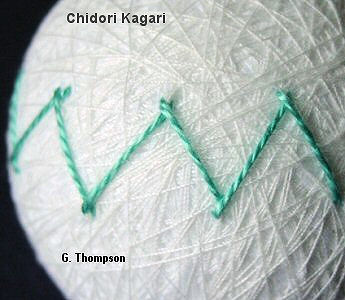
There have been comparisons of chidori kagari to being similar to, or even the same as, the Herringbone Stitch seen in Western embroidery. This is rather inaccurate and can be very misleading. Remember that there are not necessarily direct English or Western equivalents of Temari stitches and techniques, and it can create confusion if one tries to force them. The only similarity between the two is the zig-zag orientation (which is seen in many Western embroidery stitches). This can add further confusion to linking chidori kagari to any singular Western stitch.
If attention is paid to the execution of kagari, and thus chidori kagari, it is seen that the size of the stitch in Herringbone is much larger than that of the kagari used in temari. As seen in the photo at right, the kagari is so small as to be almost not seen, while in Herringbone, the stitch is visible as a vital part of the finished technique. Herringbone is often used as a decorative stitch in crazy quilt patchwork, sampler embroidery, and on counted canvas; as such the "bite" of the stitch is larger and varies as needed, making it considerably bigger than the 1-2 mm used in temari kagari (which never changes). If one were to attempt temari designs using the traditional technical standards of a Herringbone stitch, the results indeed would be disappointing; the Herringbone stitch is too large to affect the precision needed in executing temari designs. Conversely, trying to substitute chidori kagari for Herringbone would have similar negative results. Remember that the key to successful chidori kagari is the tiny stitch.
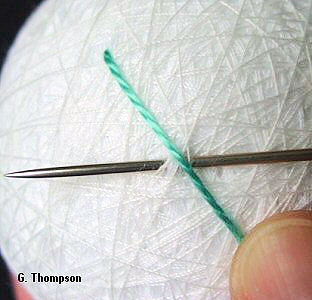 1. |
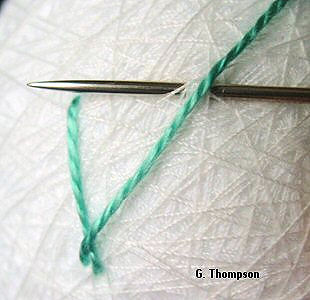 2. |
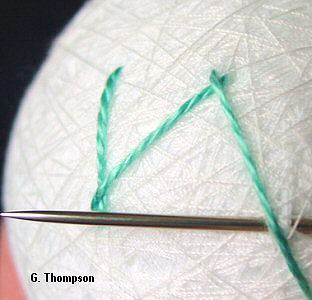 3. |
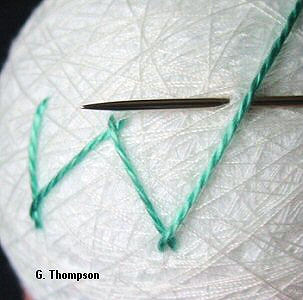 4. |
 5. |
This is a TemariKai.com Printable Page; © 2014, all rights reserved. Right click to print one copy for personal use.
Last updated 11/2015 © 1998 - 2014 G. Thompson/PuffinStuff, Inc.
